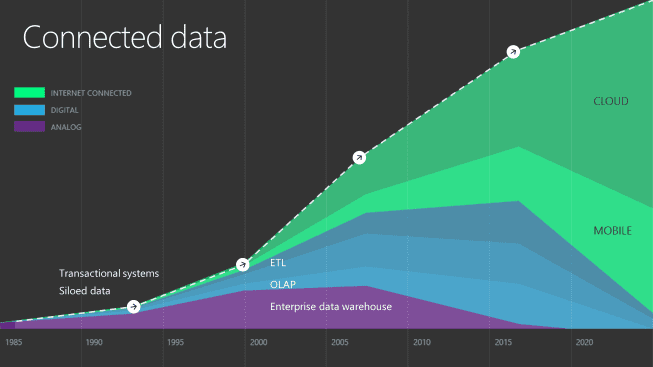Part 2: Data-Driven Organizations Will Lead The Digital Revolution
Part 2 of 3: Getting Business Value Out of Big Data is Hard
In my previous post, Data-driven Organizations Will Lead the Digital Revolution – Part 1 of 3: The Opportunity of Big Data, I described how financial institutions have the opportunity to reap the value of their vast data assets to gain a competitive advantage and remain relevant in the digital age. In a digital world, data-driven companies will thrive—and financial institutions must adopt a data-driven culture to harness the value of big data so that they better understand their customers, improve their business effectiveness, better manage risks, assure regulatory compliance, and innovate with new customer-centric business models.
But how do you get the business value you need out of big data? Indeed, delivering impactful and actionable insight to the right person at the right time proves an elusive goal.
Multiple studies have shown that despite the large investments made in business intelligence initiatives, only a small fraction of them yield the desired business impact. In a study conducted by CEB Inc. in 2015 (“Business Outcomes from Big Data,” which was based on a survey of 2335 employees) 67% of employees report they do not have the information needed to do their jobs, and 54% of employees indicated that information from corporate sources is not in a usable format. In another study conducted by TDWI (“TDWI Best Practices Report: Improving Data Preparation for Business Analytics,” 2016) only 36% of employees are somewhat satisfied with how easily they can find relevant data and understand how to use it appropriately for analytics.
Some of the common roadblocks to deriving business value that organizations face today include the lack of cross-functional collaboration, the struggle to identify the most valuable use cases, immature information-management practices focused on structured data, dissimilar technologies, and siloed data repositories across multiple lines of business. In the era of big data, this problem is exacerbated by the rapid proliferation of new unstructured data sources such as mobile devices and social media.
In the 1990s, we created enterprise data warehouses to enable the collection of transactional data and historic repositories. In the 2000s, we created rich reporting and BI frameworks to deliver value from growing collections of historic and transactional data. And today, a huge portion of the data being generated comes from mobile devices. The shift in this decade involves leveraging technological advancement to realize the value of vast amounts of data through statistics, predictive analytics, and, increasingly, machine learning. This is how we turn the problem of data proliferation into a real opportunity, especially for financial institutions that can get ahead of the curve.

The explosion of data: from transactional systems to cloud and mobile sources
Early adopters of a data-driven organizational culture are embracing cross-functional initiatives that harness and integrate all corporate data assets with social media and external sources in order to add contextual value and meaning. These organizations are ramping up their staffs’ skills across the board with an agile, iterative, and continuous learning cycle for data exploration and experimentation—amounting to a kind of democratization of data exploration and insights discovery. Shared and cross-functional advanced analytics practices can provide an integrated and comprehensive view of the business and timely answers to the top strategic business questions. Harvard Business Review’s The Digital Transformation of Business reports that, for those organizations that are mastering big data, the biggest payoffs come from allowing the integration of more data into the decision-making process (62%) and enabling faster generation of insights (51%).
Challenges and opportunities such as these are familiar territory for Microsoft Services, as we’ve accompanied numerous financial institutions around the world on their journeys from transactional data management in years past to the advanced analytics in our era of big data. Türkiye Finans Katılım Bankası (TFKB) is one such institution. We also bring to the table the benefits of our own transformation, offering our customers best practices that will help them embrace big data and derive significant business value from it.
Next up, in part 3 of this series, I will be focusing on the key enablers of success in the process of transforming into a data-driven organization.




